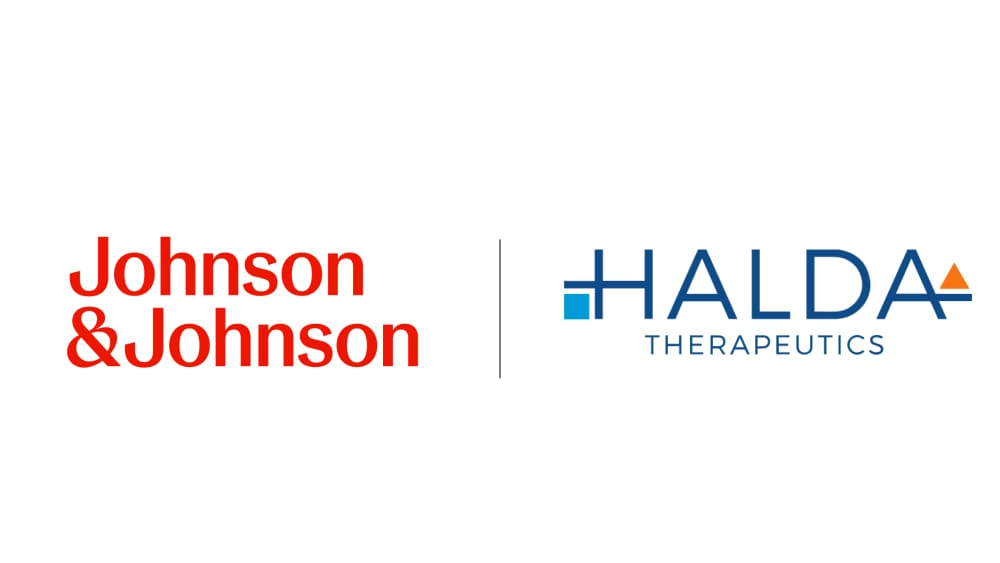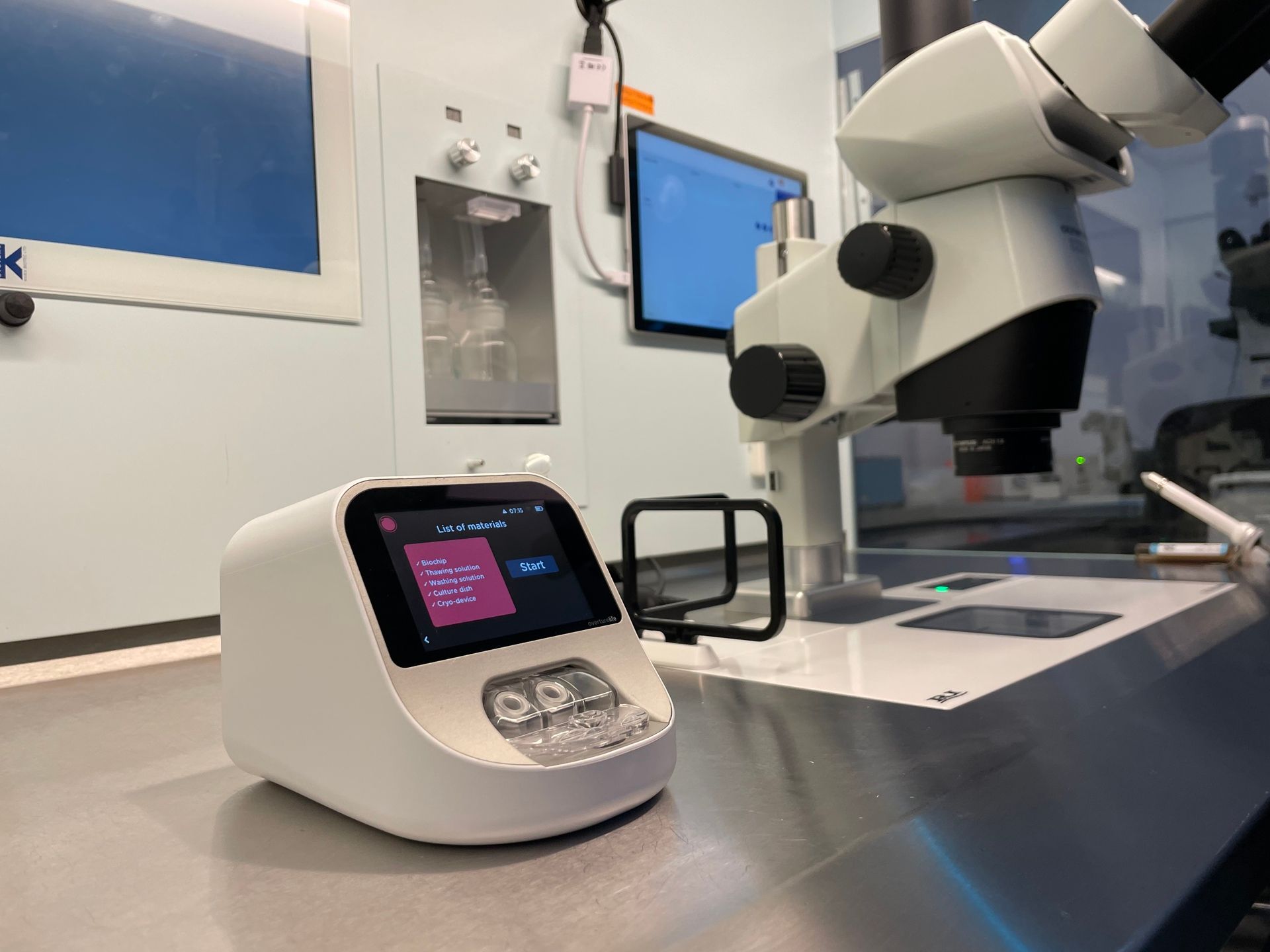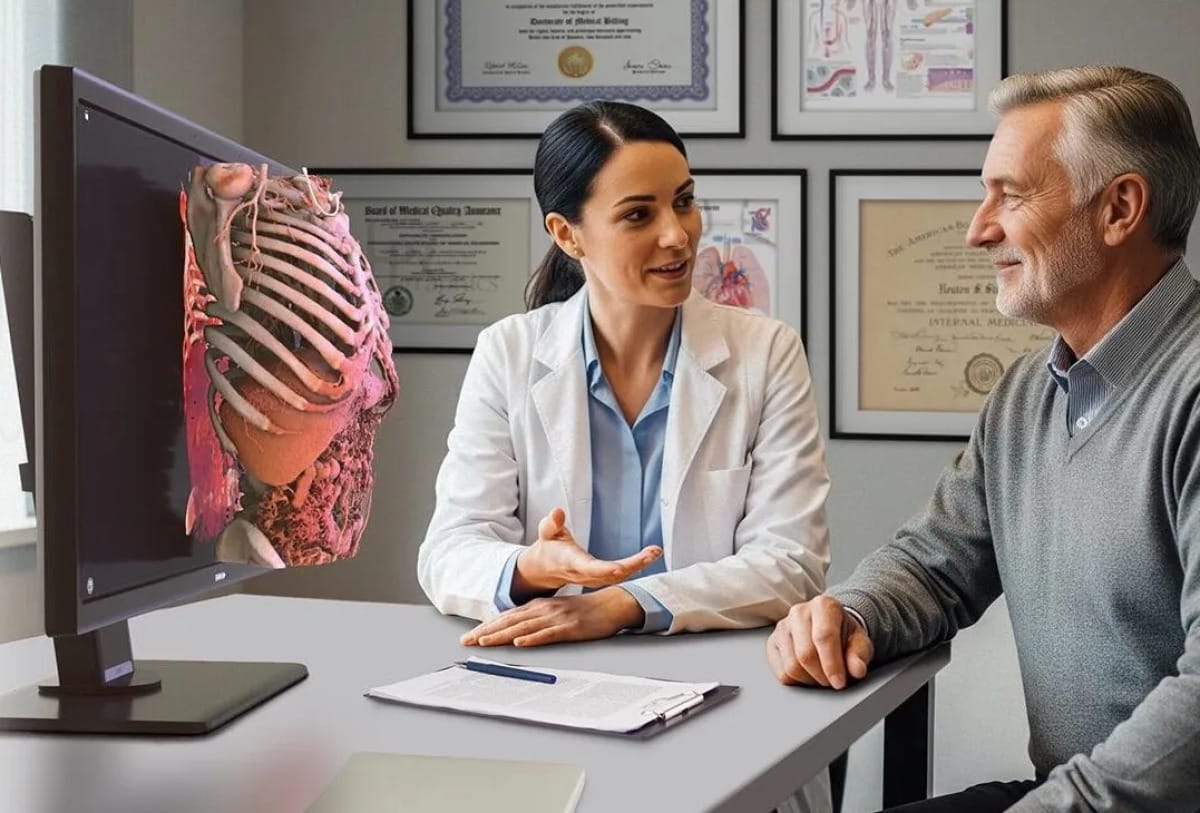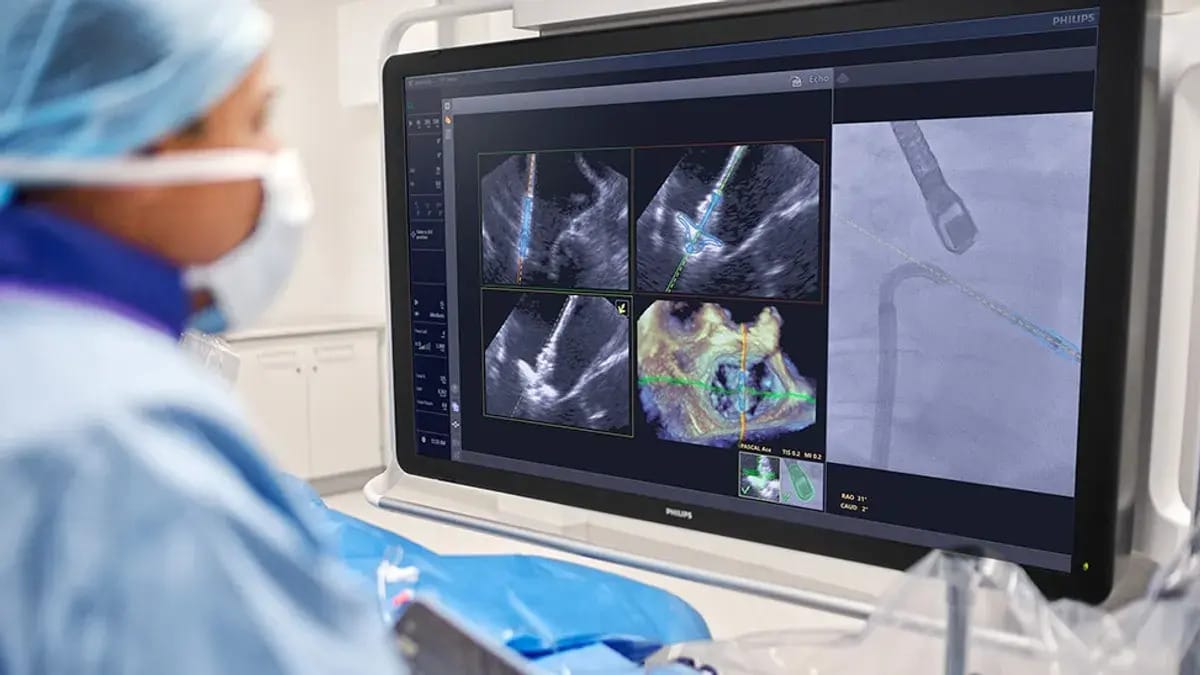- Future Human
- Posts
- Vitals #3
Vitals #3
J&J spends big for Halda, AI deployed in GLP-1s, robots in IVF, 3D anatomy for patients, and Philips offers AI-navigation
The daily health habit you’ll actually stick with…
This time of year, it’s SO hard to stay in control of your health.
Holiday travel (and meals!), big family gatherings, dark and cold days, it’s easy to skip that workout, sleep in later than you should, or have just one more cookie.
That’s why you need a daily health habit that’s easy to stick with.
Meet AG1: With just one quick scoop every morning, you’ll get over 75 ingredients that help support your immune health, gut health, energy, and close nutrient gaps in your diet.
Right now is the best time to get started - with every new subscription, they are giving away $126 in free gifts for the holidays.
Give AG1 a try today and take control of your health this holiday season.
Welcome to the 8 new subscribers who have joined Future Human since our last edition! Join 305 other leaders learning about the future of human health by subscribing here:
Hi friend,
Welcome back to Future Human! The 2025 holiday season has inspired healthtech companies to make even more overzealous announcements. This week, we struggled to narrow our initial list to just five most exciting headlines. Nevertheless, we got it done. Someone has to do the dirty work.
Here at school, I am looking down the barrel of just one more pre-clinical exam before clerkship rotations. For those not familiar with medical school curriculums, that means I am finishing my final "ever" class and soon will be starting work in the hospitals, trying a new specialty every 4-8 weeks. Next year will be quite busy, but the focus will shift—less on reviewing slides and more on seeing patients and preparing for STEP 1 boards. I could not be more excited to start using the knowledge and skills that I have been learning. A few more weeks to go, but they could not come fast enough.
We here at Future Human hope you all have exciting plans for this holiday week, and we wish you a joyful, gratitude-filled Thanksgiving. We appreciate you endlessly! Hopefully, this list of stories gives you a bit of excitement about the future of medicine before a couple days of rest.
To more lives saved,
Andrew, Nicholas, and Isabelle

Andrew’s Take
I have been looking forward to covering this story since the moment I saw the announcement last week. Crazy enough, Halda Therapeutics was founded by a professor of mine from undergrad. When Dr. Craig Crews was teaching me in 2021, he had already built his first company, Arvinas, and taken it public. Arvinas was commercializing his lab’s technology, PROTACs. TLDR; instead of inhibiting a disease-causing protein (like most traditional drugs do), Arvinas' PROTACs (PROteolysis-TArgeting Chimera) are designed to eliminate it entirely using the cell's own natural "garbage disposal" system. It represented a major shift from conventional drug discovery. As my senior year wrapped up, Craig also announced that his newer company, Halda Therapeutics (founded in 2019), was hiring.
If Arvinas is commercializing the original PROTAC technology, what does Halda do? I had to ask the same question. To put it simply (if that is even possible), Halda is developing RIPTACs (Regulated Induced Proximity TArgeting Chimera) that are also bifunctional molecules, but with a different mechanism. While PROTACs are designed to recruit a target protein to the E3 ligase to facilitate its destruction and elimination via the proteasome, RIPTACs are engineered to induce a functionally inhibitory complex, achieving stoppage of function rather than degradation. RIPTACs use a tumor-specific protein (TP) as a selective "handle" to recruit and hold an essential protein (EP)—such as a component of the cell survival machinery—thereby forming a complex that effectively shuts down the EP's vital function within the cancer cell, leading to cell death while sparing healthy cells.
Dr. Crews invented the PROTAC platform through the 90's and first published the mechanism in July of 2001. Now that hard work is paying off as he launches different teams taking the protein capture concept to various disease states. As J&J looks to beef up their pipeline to keep up with competitors getting ahead of them in other key areas (cough, GLP-1s), they are looking to trustworthy oncology. They expect the RIPTAC asset to offer a precision approach for prostate cancer first, while other earlier assets that come with the acquisition will target breast and lung tumors. I am not sure if this will really compete financially with the staggering rise of GLP-1s, but we will see! Go Dr. Crew!

Andrew’s Take
Here I was thinking GLP-1s cannot get any more powerful. It seems I was wrong, very wrong. As I dove deeper for this week’s edition of Vitals, I found that despite the weight loss and cardioprotective qualities, many teams are still trying to add new functionality, and one in Illinois may have the answer.
A team from Carle Illinois College of Medicine has launched a project to deploy AI in order to discover the best candidate to become the first triple-target diabetes drug improving BOTH blood glucose and weight. The project, partially led by a student, Anthony Wong, and Dr. Kunal Patel, are scouring drug candidates to find the triple threat. Current options target either GLP-1 or glucagon receptors to control blood glucose or curb appetite. This team is focused on creating one molecular key to target GLP-1, glucagon, and glucose-dependent insulinotropic polypeptide (GIP) simultaneously. All of this together should control blood sugar and lower body weight together.
The idea of a triple-agonist drug is not unique to Wong’s team. Retatrutide is in late-stage clinical trials claiming this capability. What is new is the identification/development process being handled by AI, ideally circumventing years of error to find the lead candidate. I am both excited by the prospect of a more capable diabetes therapeutic, but also by a team being led in part by someone in my position as a medical student. Incredible work!
Now let’s see if someone can discover an asset that allows you to get off GLP-1s without gaining the weight back.

Isabelle’s Take
Overture Life is building an automated IVF stack; DaVitri is their benchtop robot for vitrifying and warming eggs, and its new CE mark makes it the first regulated system in Europe (or the U.S.) formally cleared to freeze unfertilized oocytes with a validated blastocysts claim.
In Europe, that CE mark means DaVitri can sit directly inside IVF labs as regulated hardware that physically handles eggs and embryos, with standardized performance expectations across clinics. In the U.S., by contrast, Overture’s footprint is its CLIA-certified Dallas (where I’m currently based!) lab running the m|z metabolomics platform: an AI-supported, non-invasive embryo assessment test where clinics ship culture media to Texas and get back viability scores, without any FDA-cleared device on their own benches.
As someone born and raised in the States, it is fascinating (and a little jarring) to see Europe explicitly authorize the robot that touches the eggs, while the U.S. starts with central lab AI that nudges embryo selection from the background (avoiding full FDA oversight by sidestepping Software as a Medical Device classification).
On the upside, automating finicky steps like vitrification (rapid freezing process that turns eggs, sperm, or embryos into a glass-like state to prevent the formation of damaging ice crystals) could relieve the global embryologist (see: specialist-labor) bottleneck and make IVF less dependent on a handful of ultra-skilled humans in big urban labs. A standardized, benchtop system could expand capacity and increase IVF access for more people. On the downside, I worry when IVF starts to look less like medicine, and more like industrialized reproduction. Some complicated issues come to mind: commodification of reproduction and eugenics creep due to both algorithmic and good-ol-fashioned human bias.
I absolutely support people, especially women, having more temporal flexibility around childbearing, but I admit that I’m still uneasy about fertility tech evolving in high-margin, privately financed niches. Finally, this development calls for the classic AI debate: are we actually freeing experts for higher-order judgment, or slowly de-skilling the field until real control sits only with vendors and their machines rather than with clinicians and patients. I guess we’ll just have to wait and see!

Andrew’s Take
Physician consultations are not always a two-way street. Although we (medical students) are training to make decisions and comb through details alongside our patients, it sometimes can feel like the physician is doing it all and you are just along for the ride. One new collaboration is trying to make this process better for all, by allowing realtime anatomy visualization to make things clearer for all involved.
Avatar Medical and Barco have just announced Eonis Vision, a product aimed at making medical imaging a more digestible part of patient consultations. The core innovation lies in Avatar Medical's software, which instantly converts complex 2D CT and MRI data into spatially accurate, lifelike 3D anatomical avatars without requiring time-intensive segmentation. This software is paired with Barco's Eonis 3D display, which is the world's first glasses-free autostereoscopic monitor certified for medical use.
By eliminating the need for specialized goggles, the system seamlessly integrates 3D visualization into existing clinical workflows. Physicians can launch the interactive anatomy directly from a patient's medical record. This shared experience allows patients and physicians to literally see the pathology together, moving the consultation beyond a difficult 2D interpretation.
Oncologic surgeons have been the first to note that the technology fosters stronger trust and deeper patient engagement by providing immediate comprehension of the diagnosis. I don’t know about you all, but I am certainly more of a visual + tactile learner, so this seems like a no brainer. Time will tell if physicians change their ways with patient interactions, but for all patients sake I sure hope they do.

Andrew’s Take
Minimally invasive procedures seem to be the way of the future, at least in cardiology that is for sure. What minimally invasive also means, at least for the physician, is minimally visible. Having watched both procedures many times, it is a lot easier to know what you are doing when you can see the aortic valve in front of you versus when you are passing it through a vein and tracking its position on 2D X-ray fluoroscopy. With that said, many are working on how to keep things minimally invasive while improving physician visibility from within. I am even working with my engineering lab on a new catheter that offers 3D visualization of the heart to interventional cardiologists as they are passing stents or valves via catheter.
Philips and Edwards seemed to have also gotten that message. With a massive team of engineers, they have built a product that translates in real time complex images into intuitive maps of the inside of the heart to guide clinicians as they navigate the labyrinth of vessels.
For those who are less cardiovascularly inclined, dysfunctional heart valves are very common, especially in the mitral valve. Mitral valve regurgitation affects 35 million adults worldwide, leading to fatigue and shortness of breath. When patients are unable to handle open-heart surgery, they look to transcatheter repair options like mitral transcatheter edge-to-edge repair (M-TEER). Artificial valves are passed through tiny incisions in the femoral vein before being guided to the valve where they are expanded, pushing the old valve to the sides.
The physician guiding the new valve to the heart uses a combination of X-ray and ultrasound to find out where they are and where they need to turn to get to the final location–a serious headache if you can imagine. With the Philips/Edwards DeviceGuide, however, physicians will see a virtual 3D model of the device in the vessels, superimposing this model on the live images to offer ease of guidance. I would guess if they are commercializing the product, they have collected the data showing final valve placement is either fast, more accurate (fewer adverse events), or both with the guidance. I will keep tabs though to see just how much better it is as it gets adopted globally.
We hope you enjoyed this edition of Vitals!
We always appreciate feedback, questions, and conversation, so feel free to reach out on LinkedIn or by replying to this email.
To more lives saved,
Andrew, Nicholas, and Isabelle

